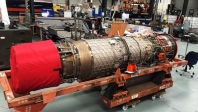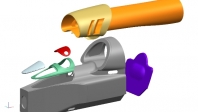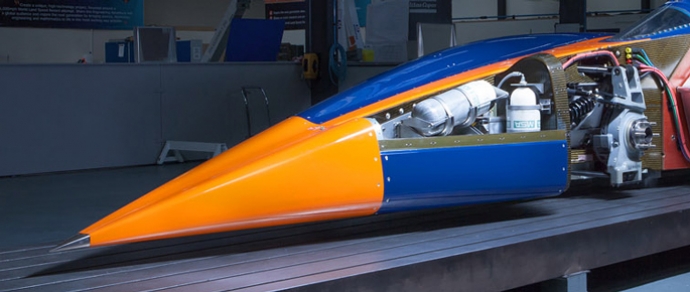
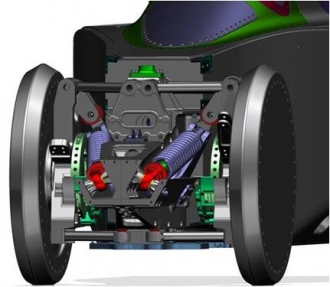 Tight packaging...
Tight packaging...
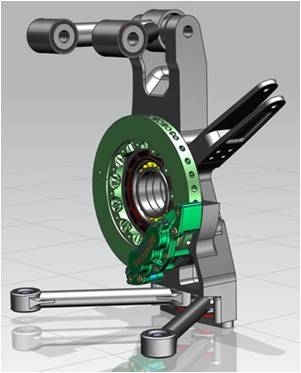 ...and clever uprights
...and clever uprights
BLOODHOUND SSC’s nose is one of the features that gives it its instantly recognised shape, but it hasn’t been designed just to look stunning. The shape of the nose is absolutely vital for the Car’s overall aerodynamic success.
Nose shape
The shape of the nose hasn't changed very much from our original designs. However, the height of the nose contributes to the overall aerodynamic efficiency of the Car: raise the nose and you get more lift at the front or lower it to reduce the lift. Hence as more tests have been done using techniques such as computational fluid dynamics, the position of the nose has been changed over time to get it in the ideal place.
The underside of the Car, including the nose, is virtually flat all the way to the tip as this gives us the best shape – again, calculated using computational fluid dynamics.
Nose cone
The majority of the ‘nose’ is made from carbon fibre composite but the nose cone, or tip, has been made separately from titanium using 3D printing techniques. (Aluminium was considered for the nose cone as it is also very lightweight, but it would have interacted with the carbon fibre and caused corrosion).
A laser melting machine uses an additive manufacturing process to fuse together very thin layers of fine powdered titanium and form a hollow shape, with patterns on the interior and serrations and score marks to help bond it to the rest of the Car.
Not only would this shape and finishing have been incredibly difficult to achieve using traditional machining, but that approach would also have wasted up to 95% of the original material, which is very expensive.
Inside the nose
There is a lot of equipment inside the nose. Its clever design allows it to house the front suspension, the wheels, the wheel uprights and bearings, the brakes and a considerable amount of the Car's control systems.
It also houses the ice tanks for cooling the auxiliary power unit system, some of the pneumatic systems, the hydraulic accumulator and batteries.
Find out more
You can find out more about the nose, how hot it will get and the shockwaves around that part of the Car in this video on the nose which is part of our Anatomy of the Car series.

